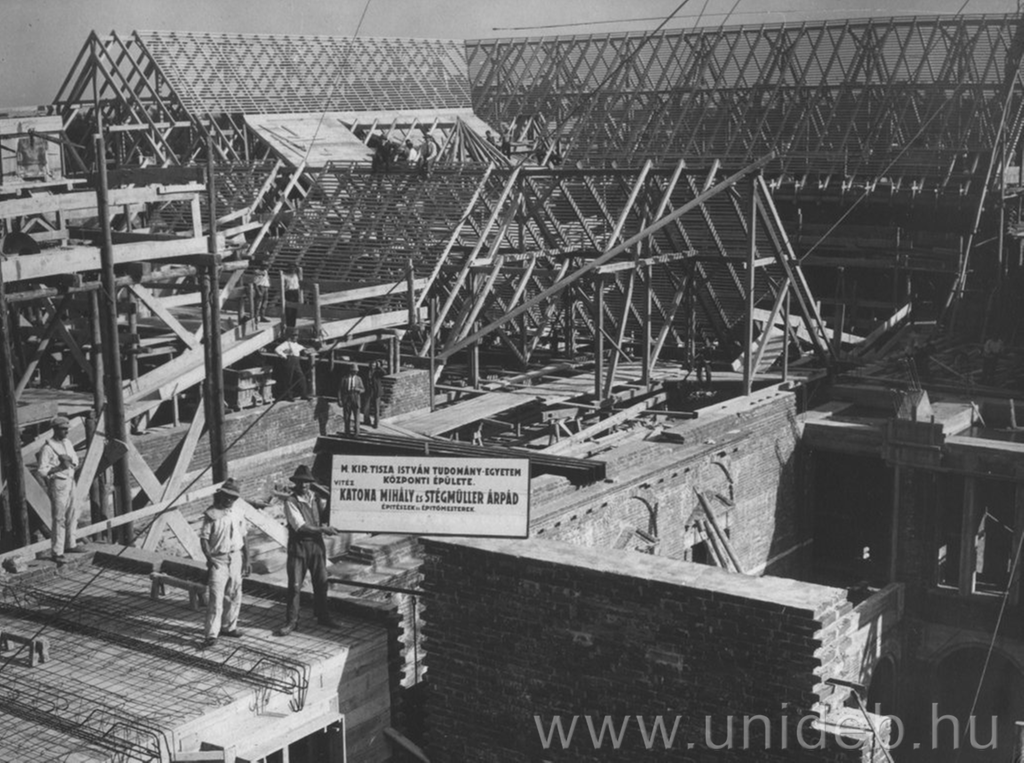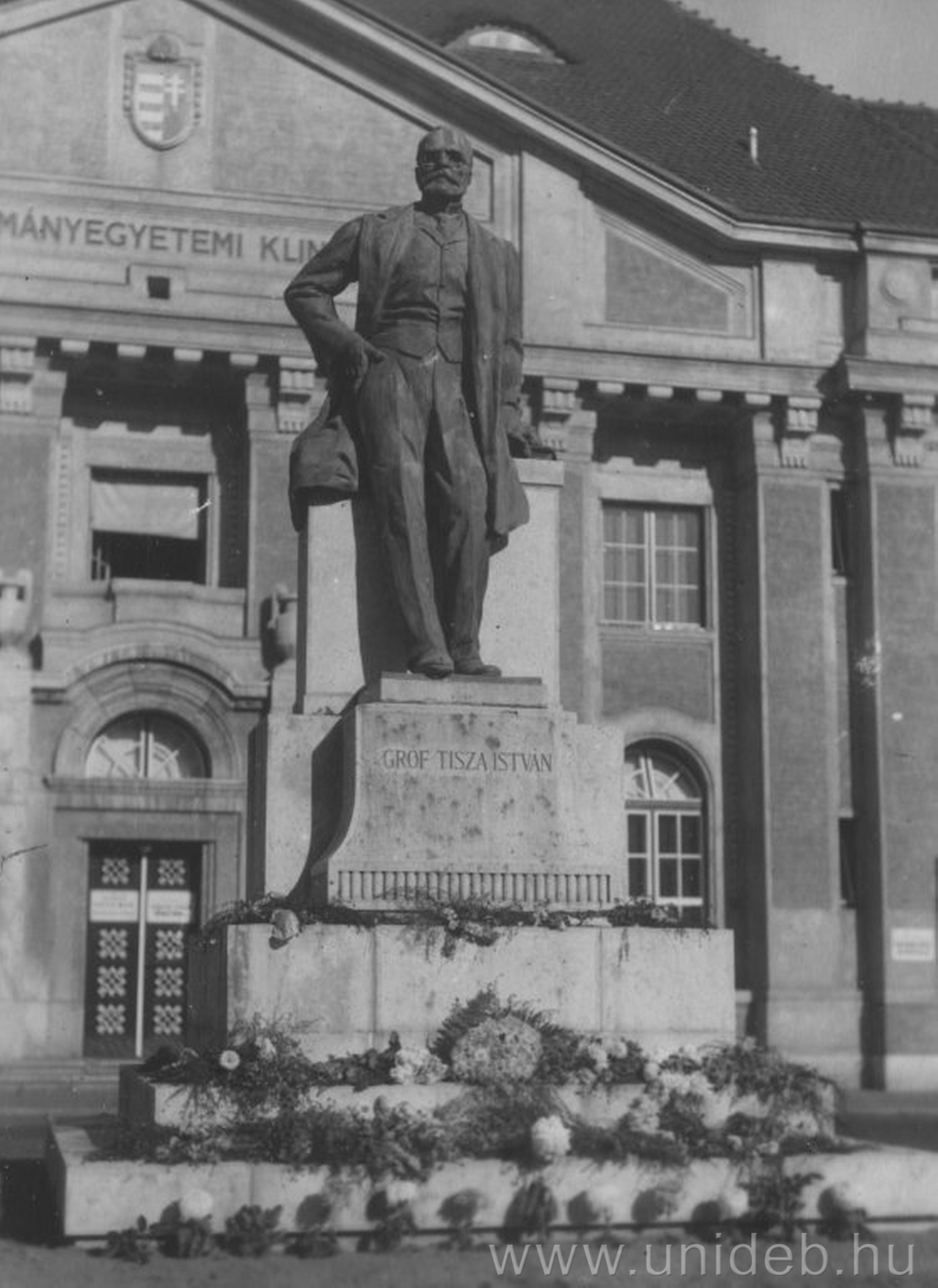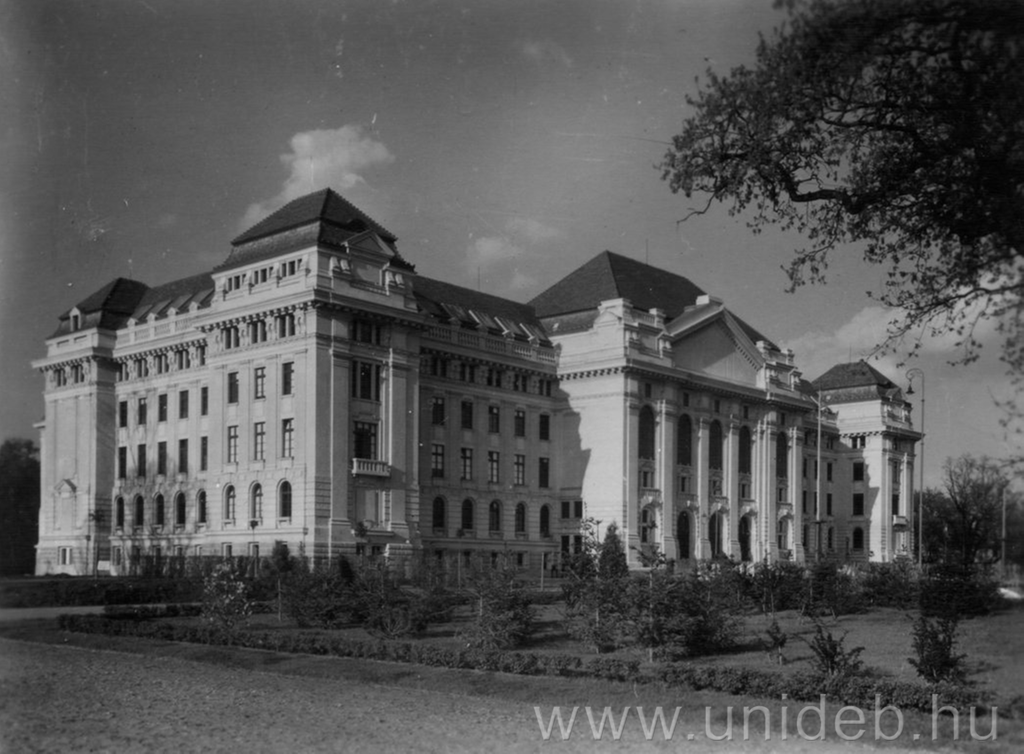The University of Debrecen, the oldest institution of higher education in the country operated continuously in the same city, is one of the research universities of national excellence in Hungary offering the widest spectrum of educational programs in 14 faculties and 24 doctoral schools.
 The roots of higher education in the city reach all the way back to the 16th century and the foundation of the Reformed College of Debrecen in 1538. The College played a central role in Hungarian education and culture for centuries. This is the date featured on the symbol of the university as well, the gerundium, a tool originally used by the students of the Reformed College to put out fires, showing respect for ancestors and traditions.
The roots of higher education in the city reach all the way back to the 16th century and the foundation of the Reformed College of Debrecen in 1538. The College played a central role in Hungarian education and culture for centuries. This is the date featured on the symbol of the university as well, the gerundium, a tool originally used by the students of the Reformed College to put out fires, showing respect for ancestors and traditions.
In 1912 with Act XXXVI, originally submitted as a bill by Count János Zichy, Minister of Religion and Public Education, the Hungarian Parliament decided on the establishment of two universities, one in Pozsony [Bratislava] and the other in Debrecen. Thus the Hungarian Royal University of Debrecen was established in the cívis town with five faculties (Faculty of Reformed Theology, Faculty of Law, Faculty of Medicine, Faculty of Arts, Linguistics and History, and the Faculty of Mathematics and Science). However, the university opened only two years later, in 1914 with three faculties. First, students studied in the building of the Reformed College, which soon proved to be too small. The city of Debrecen granted a huge (112 acre) land in the Great Forest for the university, and also provided first 5 then an additional 3 million Golden Koronas for the construction of a new building. In 1918 Charles IV inaugurated the central building of the newly founded Faculty of Medicine. The teaching of mathematics and natural sciences started within the Faculty of Arts from the 1923/24 academic year. The independent Faculty of Sciences was opened only in 1949.
In 1921 the university was named after Count István Tisza, former prime minister and statesman who also studied in the Reformed College and who was assassinated on October 31, 1918. Thus the name of the institution was changed to István Tisza Hungarian Royal University of Debrecen.
 The construction of the main building of the university started in the 1920s and it was officially opened in 1932. At the time it was the third largest investment project of the country after the building of the Parliament and the Buda Castel Palace. Construction lasted for four years, even so only one third of the original plans could be realized.
The construction of the main building of the university started in the 1920s and it was officially opened in 1932. At the time it was the third largest investment project of the country after the building of the Parliament and the Buda Castel Palace. Construction lasted for four years, even so only one third of the original plans could be realized.
After the Second World War the fragmentation of the university (then already having five faculties) was started in 1949 due to political reasons. In the same year the Faculty of Law was temporarily suspended, in 1950 the Faculty of Theology was separated from the university, and it returned to the College with support from the church. Making medical training independent, the Medical University of Debrecen was organized in 1951. The university bore the name of István Tisza until 1945, then it was named University of Debrecen, then from 1952 it operated under the name of Lajos Kossuth University.
In the 1980s negotiations already started about the reunification of fragmented higher education in Debrecen. Events leading to integration, however, accelerated only after 1996 when an amendment stipulated that after December 31, 1998 universities had to provide educational programs of adequate quality in several disciplines.
 Finally, on January 1, 2000 the University of Debrecen was established with the integration of the Agricultural University of Debrecen, the Medical University of Debrecen, Lajos Kossuth University, and the István Wargha Teacher Training College of Hajdúböszörmény. The university having an important role and position in Hungarian higher education started its operation with five university and three college faculties organized into three centers, the Center for Agricultural and Applied Economic Sciences, the Medical and Health Science Center, and the Center of Arts and Sciences.
Finally, on January 1, 2000 the University of Debrecen was established with the integration of the Agricultural University of Debrecen, the Medical University of Debrecen, Lajos Kossuth University, and the István Wargha Teacher Training College of Hajdúböszörmény. The university having an important role and position in Hungarian higher education started its operation with five university and three college faculties organized into three centers, the Center for Agricultural and Applied Economic Sciences, the Medical and Health Science Center, and the Center of Arts and Sciences.
Section 26 of Act CCIII of 2013 on the amendment of particular acts establishing the central budget of Hungary for 2014 included provisions concerning the organizational structure of the university, thus the centers were no longer used as organizational units as of January 1, 2014.
Today the University of Debrecen is a leading and prominent institution of higher education in Hungary. It is not only at the forefront of Hungarian and international education but also active in the fields of research, innovation and development, and enjoys fruitful links with the business sector. The ever-changing social and economic environment demands continuous renewal from the institution and there is a constant need to adapt to new requirements. The University of Debrecen’s mission is to contribute to the education of future generations in cooperation with Hungarian and international partners, with high-quality interdisciplinary programs, and research built on versatile and practical experience.
Besides education, the institution also provides European-quality patient care with comprehensive services to fulfil its obligations in the city, county, and region and often on the national level as well. As of July 1, 2017, with the merger of the Kenézy Gyula Hospital and Clinic, the capacity of the institution in both patient care and education was expanded.
As of August 1, 2021, the University of Debrecen was transformed, the legal status of the budgetary authority was ceased and the institution continues to operate as a non-profit not public university with legal personality, maintained by Count István Tisza Foundation for the University of Debrecen.